by Professor Jon Parmenter
Cornell University, chartered in 1865 as New York State’s designated recipient of federal land-grant university status, received approximately ten percent of the acreage allocated nationally by the Morrill Act of 1862. By 1900, nearly one-third of the total Morrill Act land-grant revenues generated by all the states had accrued to Cornell University. In March 2020, the High Country News published “Land-Grab Universities” (hereafter “LGU report”), an award-winning investigative report coauthored by Robert Lee and Tristan Ahtone that detailed for the first time how the Morrill Act funded land-grant universities with expropriated Indigenous land. Increased public awareness of the linkages between Indigenous dispossession and the monies that built land-grant universities prompted many of these institutions to begin reckoning with their origins in new and interesting ways. Given Cornell University’s exceptional status within the broader history of the Morrill Act, this essay assesses the University’s response to date in the context of its peer land-grant institutions as well as that of the emerging national conversation concerning the imperative of redress for all manner of inequities associated with the historical financing of American higher education.
General Responses
Within a month of the original publication of “Land-Grab Universities, Professor Stephen M. Gavazzi of Ohio State University published an op-ed in Forbes, entitled: “The Original Sin of Our Nation’s First Public Universities.” Noting the analogy between the findings of the LGU report and the national dialogue regarding atonement for slavery, Gavazzi argued that the evidence uncovered by Lee and Ahtone obligated land-grant universities to undertake both contrition – expressions of remorse and offers of apology – and reparations. Drawing a distinction between the case of slavery (and/or the slave trade), in which identification of the recipients of an apology (or reparations) may not always be obvious, Gavazzi pointed out that the documentation provided by the LGU report made clear not only the amounts and location of former Indigenous land allocated by the Morrill Act, but also the identity of the tribal nations from whom the land was taken – often by what he describes as “lopsided” treaties, the threat of violence, or “brute force.” Gavazzi, one of the first to respond publicly to the LGU report, has been, as we will see, one of the most active and consistent advocates for meaningful reconciliation undertaken by land-grant universities whose endowments rested on profits taken from the ancestral homelands of some 250 Indigenous nations.
The next broadly-focused response to the LGU report appeared in a scholarly forum entitled “Reflections on the Land-Grab Universities Project,” published in the Spring 2021 issue of Native American and Indigenous Studies.[1] The case of Cornell University loomed large in this forum, with eight of the fourteen essays addressing aspects of the institution’s outsized role in this history as “the beneficiary of the greatest endowment of wealth by far from Indigenous lands and/or scrip distributed by the Morrill Act.”[2] Among the more significant themes evoked by this forum were:
- the challenges posed by the “Land Grab Universities” findings in the context of historically persistent narratives of progress surrounding land-grant universities[3]
- the power of the mapping techniques employed by Lee and Ahtone for representing the extent and nature of benefits accruing to particular institutions from particular acts of state-sponsored dispossession[4]
- discussion of the long-term, intergenerational impacts of deprivation on Indigenous nations in juxtaposition to the spectacular financial growth of land-grant university endowments over time[5]
- the arresting and disturbing claim that land-grant universities “consistently perform worse than non-Morrill universities” in regard to both enrollment and graduation rates of Indigenous students[6]
- calls for long-term-oriented acts of atonement and accountability on the part of land-grant universities that align with the ongoing nature of benefits flowing from the Morrill Act to their respective endowments.[7]
In the Fall of 2021, the Clements Center for Southwest Studies at Southern Methodist University convened “Campuses and Colonialism,” a symposium intended to promote the kind of serious intellectual and institutional accounting for complicity with settler colonialism[8] that has been witnessed in recent years with regard to slavery and the slave trade. Citing the example of Northwestern University’s response to the role of John Evans, one of its founders, in the 1864 Sand Creek Massacre in Colorado Territory as an exception, the organizers of “Campuses and Colonialism” highlighted the ongoing disparity between the impressive and heavily capitalized projects undertaken with reference to slavery at institutions such as Georgetown University, Yale University, and Harvard University and those relating to past acts of violence toward and dispossession of Indigenous peoples. Though not concerned with the Morrill Act per se, this symposium marked a significant turning point in raising awareness of long-overlooked linkages between settler colonialism and the development of higher education in the United States.
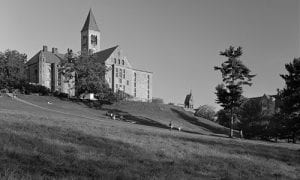
Stephen Gavazzi’s research team at Ohio State University commenced publication of the preliminary results of their activities in November 2021. Crediting the LGU report for having blown “the doors off the central narrative surrounding the foundation of America’s original Land Grant [sic] universities,” the authors discussed steps undertaken at Ohio State for opening a dialogue on reparative actions to be undertaken in response to the dispossession and sale of tribal lands issued by the Morrill Act to fund the establishment of the University. Gavazzi and John Low elaborated further on the reckoning underway at Ohio State in a Spring 2022 online essay published by the American Association of University Professors, in which they discussed: the significance of land acknowledgments focused not only on lands currently occupied by land-grant universities but also on the lands taken from tribal nations and sold to fund institutional endowments, examples of programs to provide financial assistance to Native students in various states, partnerships between 1862 Morrill Act institutions and Tribal Colleges and Universities (TCUs) granted land-grant status by the 1994 Equity in Educational Land-Grant Status Act, and the need to commit to the “long haul of decolonization” – commencing with a call for all land-grant universities to provide free tuition for Native American students without regard for residency. Finally, in April 2022, the Ohio State research team discussed their preliminary findings derived from interviews with representatives of tribal nations impacted by the particular federal treaty surrenders of land provided by Congress to the State of Ohio to underwrite the establishment of Ohio State University. The data obtained yielded an extensive catalogue of ongoing harms experienced by tribal nations as a result of earlier losses of land, indicating the “devastating and unceasing impact” of prior dispossession “on virtually all aspects of life” in affected Indigenous communities. Gavazzi’s team underscored once more in this article the imperative of land-grant institutions making enduring commitments to restitution rather than converting the circumstances into a “feel-good” exercise for the university or offering merely a “one and done” experience.
Responses from Other Land-Grant Institutions
Prior to considering Cornell University’s response to the information first brought to light by the LGU report, we will survey representative examples of responses from the national cohort of fifty-two “1862” Morrill Act land-grant universities. Notably, the Association of Public and Land-Grant Universities, which serves as an overarching organization for institutions chartered under federal land-grant legislation in 1862, 1890, and 1994, has issued a statement of land acknowledgment that addresses the role of Indigenous dispossession in the history of the Morrill Act. Yet at present the mandate of its Council on Diversity, Equity, and Inclusion is framed in general terms, containing no specific mention of the Morrill Act in its discussions of advancing racial justice and equity.[9]

South Dakota State University – The Wokini Initiative
In January 2017, over three years before the publication of the LGU report, South Dakota State University President Barry H. Dunn published an institutional white paper outlining the university’s commitment to better serve the Lakota and Dakota residents of South Dakota in light of the annual income accruing to the University from treaty-guaranteed lands taken from those nations under the auspices of the Morrill Act and the Dawes Allotment Act of 1887. Employing the Lakota term for “a new life,” or “a new beginning,” the Wokini Initiative is based on a simple premise: to devote the approximately $600,000 annual income from 160,000 acres of land given to the University by the Morrill Act to reparations (described by Dunn as “strategic re-investment” in the form of scholarships and programs aimed to support tribal members as students) and financing for a new American Indian Student Center. The Wokini Initiative maintains an extensive online presence and publishes a newsletter. Its mission statement emphasizes three principal goals: 1) to enhance cultural programming and support for American Indian students, 2) to offer Wokini scholarships for students who are tribally enrolled or have descent through a federally recognized tribe in the United States including Alaskan Natives, and 3) to enhance research and outreach partnerships with tribes, tribal colleges and other tribal organizations.
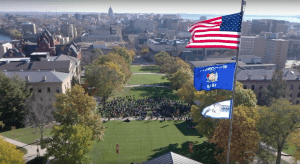
University of Wisconsin-Madison – Our Shared Future
From its origins in a sign erected on campus in June 2019 recognizing the University’s land as the ancestral home of the Ho-Chunk Nation, this endeavor at the University of Wisconsin has grown into a multifaceted institutional commitment to respect the inherent sovereignty of the Ho-Chunk and other First Nations residing in what is now the State of Wisconsin and to promote deep consideration of the shared past and present of Indigenous and non-Indigenous people in Teejop (a.k.a. Madison). Significantly, Our Shared Future is described as:
“a process, not a land acknowledgment or something to recite. It is a collective act of moving from ignorance to awareness; an educational framework for posing questions; and an opportunity to celebrate the Ho-Chunk people, as well as learn about the hard truths of our histories with them. It is a challenge to educate ourselves and each other, and create a better future together.”
Our Shared Future has hosted symposia in 2019 and 2021 on the anniversary of the September 15, 1832 Treaty in which the Ho-Chunk Nation ceded lands (including the present-day City of Madison) to the United States with the goal of fostering improved understanding of these nation-to-nation agreements and how they continue to structure relations between the Ho-Chunk and the United States to the present day. The University began to fly the Ho-Chunk flag on its campus in November 2021 and the website maintains an active blog linking media coverage, events calendar, and learning resources.
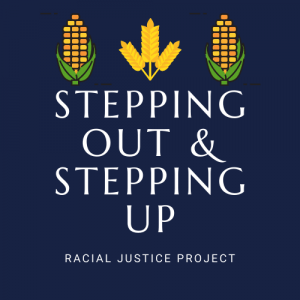
Ohio State University – Stepping Out, Stepping Up
Formed in December 2020 with extensive support from both internal and external grants, this initiative – led by Gavazzi but engaging a large number of scholars across the OSU system – is based on a call for Ohio State University, as an 1862 Morrill land-grant institution, to “Step Out” of comfort zones and “Step Up” to the responsibilities that come with the massive transfer of wealth from tribal nations to the University and to address challenging questions with regard to Ohio State’s relationship to contemporary Indigenous communities. Resources posted in the online blog include links to published scholarship, videos, interviews, public events, and a speaker series. Organized around the question of “Why Land-Grant Truth?” the Ohio State research team describes its purpose as two-fold: 1) joining with the descendants of tribal nations affected by the various land surrenders that contributed to the founding of Ohio State, and 2) advocating alongside these nations to repair the harm caused by these past acts of dispossession through means including “social and economic restitution.”
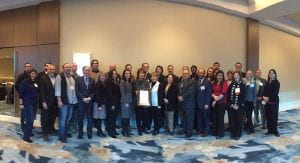
University of Minnesota – Toward Recognition and University-Tribal Healing (TRUTH) Project
This project originated from a series of resolutions written by the Minnesota Indian Affairs Council calling on the University of Minnesota to improve itself as a neighbor to the eleven tribal nations who share geography with state residents. Adopting the unique approach of grant-supported, community-led participatory research, the TRUTH project enables tribal community members to tell, in their own words, the history of relations between their nations and the University of Minnesota. The project website hosts a detailed Project History, linking the questions posed to the data provided by the LGU report. The TRUTH project organizers emphasize that their initial goal – the revealing of truth concerning the nature and extent of the impact of Morrill Act-related dispossession in Minnesota – represents only the beginning of subsequent conversations to be held about how to “right the decades of atrocities that have been inflicted on Native Americans and their respective Tribal Nations at the hands of the State of Minnesota and the University of Minnesota.”
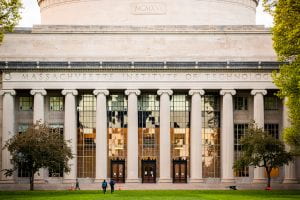
Massachusetts Institute of Technology
On April 19, 2022, President L. Rafael Reif of the Massachusetts Institute of Technology (MIT) published an open letter to the University community entitled “The Indigenous History and Future of MIT.” President Reif discussed what he had learned from visits to a class on the “Indigenous History of MIT” over the prior two semesters and announced an extensive series of institutional steps undertaken to “advance Indigenous scholarship and support our Indigenous community.” These included: creation of a tenure-track faculty line in Native American Studies, expanded support for a visiting professors and scholars program, a research project aimed at documenting the role of former MIT President Francis Amasa Walker in advancing the reservation system during his prior tenure as federal Commissioner of Indian Affairs from 1871-72, and enhancing scholarship support for MIT’s Indigenous Languages Initiative, which aims to train students from Native communities confront by endangerment of their Native languages. In keeping with the precedent set by the Wokini Initiative, President Reif also noted that an amount of money equivalent to the annual disbursements made from the State of Massachusetts to MIT (as interest payments on the endowment principal created by the sale of former Indigenous land under the auspices the Morrill Act) would be made available to support Indigenous community efforts on the MIT campus. A campus media report indicated the influence of the “Indigenous History of MIT” course in promoting the wide-ranging institutional expression of obligation to Indigenous students and communities as a result of the benefits yielded by the Morrill Act. MIT Fellow David S. Lowry was quoted in the campus news article pointing out that the truth-telling associated with discussions of past injustices is often read as antagonism but is actually better understood as a means of developing a more cohesive sense of community through improved understanding of different groups’ historical experiences.
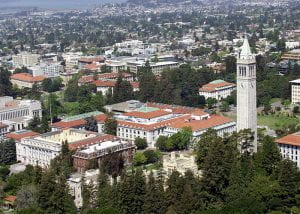
University of California-Berkeley – Native American Opportunity Program
On April 18, 2022 the University of California announced that in-state system-wide tuition and student service fees for California students from federally recognized Native American tribes would be fully covered under grants or scholarships. The UC Native American Opportunity Plan represented the latest development from the University of California, another Morrill Act institution that made an early response to the findings of the LGU report by hosting a two-part symposium in September and October 2020, publishing a 73-page report summarizing the findings of the symposium, and maintaining an online presence detailing how the expropriation of 150,000 acres of Indigenous land that funded the University of California is tied directly to the state’s uniquely troubled history of dispossession and acts of genocide against its Indigenous population during and after the California Gold Rush. The published report includes a five-page list of recommended actions, organized under a general rubric that calls upon the University of California leadership to work directly in a transparent, collective manner with affected tribal communities to: 1)identify and pursue actions that meet the prioritized needs of these communities, and 2) to dedicate the necessary financial resources to deliver on these actions. In June 2022, an article by Hayden Royster in California (published by the University of California Alumni Association) asked the question of what Berkeley should do with the information that its origins are linked to land stolen from Indigenous communities. In an interview response to Royster, historian Robert Lee (an alumnus of the University of California and an author the original LGU report) responded by noting that what the University of California (and, by implication, other 1862 land-grant universities) must not do is treat the Morrill Act as part of a distant history. Lee pointed out that the Morrill Act, as a living piece of legislation, continues to generate endowment returns on the original investments derived from former Indigenous lands. Those returns, intended “for perpetuity” by the original Morrill Act also generate, as Lee indicated, “multiplier effects” that need to be considered in any discussion of redress for affected Indigenous communities.
Cornell University – “Commitment to Indigenous Communities and Nations in North America”
Launched in March 2022, Cornell University’s “Commitment to Indigenous Communities and Nations in North America” webpage is accessed via a click-through link on the University’s Land Grant Affairs website.[10] The visual content of the page as it appears on-screen is oriented toward the present, depicting current faculty, alumni, and research and extension projects. Scrolling down, one finds the text of the University’s official Land Acknowledgment (adopted in May 2021), which refers exclusively to the University’s location on the ancestral homelands of the Gayogo̱hó:nǫ’ (Cayuga) Nation. A separate button for “History” then appears, which must be clicked to view a brief (approximately 800-word) narrative produced by University staff. This section includes the following statement:
In addition to our relationship with the Gayogo̱hó꞉nǫ’ homeland, as a result of the Morrill Land-Grant Act of 1862, Cornell was among 52 land-grant universities that were beneficiaries of land scrip from the U.S. federal government. The government awarded land scrip to states relative to a state’s population, and thus New York received the largest amount. We recognize that lands distributed to states to support the founding of universities were previously taken by the federal government from Indigenous Nations by force and fraud that included treaty violations, treaties signed under duress, or direct appropriation without compensation – and that the subsequent sales of these lands seeded endowments, including Cornell’s. Historians, including Prof. Jon Parmenter at Cornell, have explained that, from its very founding, the federal government was engaged in a practice of extinguishing Native title, thereby dispossessing Native people of their lands and natural resources for the benefit of American settler institutions and individuals.
As the largest recipient of proceeds from appropriated Indigenous lands from the 1862 Morrill Act and as the institution that accrued the greatest financial benefit from that land, we acknowledge Cornell’s central place in this history. Indeed, the history of the Morrill Act is more complex than commonly known. As more information continues to emerge, we will continue to honor and present this history as part of our land grant origins. Faculty in AIISP are conducting ongoing research into this important aspect of the university’s history.
The historical narrative then moves to a discussion of Cornell’s involvement with Agricultural Extension Education for New York-based tribal communities in the 1920s, the origins of the American Indian and Indigenous Studies Program in 1983, and concludes with a description of two Native American-themed residence halls at the University. The online viewer is then encouraged to “collapse” this historical narrative with the click of another button and scroll further down to brief subsections discussing Education, Research, and Engagement.
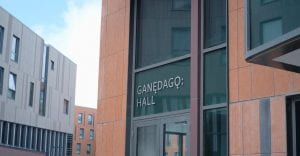
What is striking about Cornell’s “Commitment” page is its overt focus on the past and present and contrasting silence about the future. Considered in light of the other land-grant institutional responses to the LGU report discussed above, Cornell’s falls short in terms of offering any discernible, tangible institutional commitment to any kind of redress for the benefits it received under the Morrill Act of 1862 beyond a pledge to “continue to honor and present this history as part of our land grant origins.” To be sure, the text of the “History” section of the “Commitment” page (and the text on the Land Grant Affairs homepage) contains accurate language acknowledging Cornell’s place in the history of Morrill Act dispossession, but we are left to wonder about the nature and/or extent of any future commitments undertaken by the institution to address issues related to that history.
I will conclude with a few observations and suggestions for consideration.
- We have known for almost 120 years[11] that Cornell University is the largest beneficiary of any of the nation’s land-grant colleges from lands distributed by the Morrill Act of 1862. Over fifty years ago, an Indigenous Cornellian (Roger Dube ’74) pointed out at an April 1972 public conference on the Cornell campus the institution’s historical profiting from timber harvested on former Indigenous lands in Wisconsin. What more information does the University need to “emerge” in order to move from mere acknowledgment of that fact to effective institutional action on the question of providing redress for the Indigenous nations affected by the land cessions that fueled Ezra Cornell’s renowned speculative venture? Also of note here are the trenchant questions raised by Cornell University postdoctoral scholar Dr. Meredith Alberta Palmer in a September 2021 lecture concerning the form(s) such redress should take.
- Cornell University’s current official land acknowledgment statement, while commendable in addressing the University’s relationship to the ancestral Gayogo̱hó:nǫ’ land on which it is built, fails to acknowledge the ancestral lands of the Anishinaabe (Ojibwe), Dakota, Ho-Chunk,[12] Kansa (Kaw), and Osage nations with which the University directly grew its endowment from 1868 to 1935 (to say nothing of the ongoing impact of those funds on the growth of the endowment since 1935). As such, it is an inadequate representation of institutional history and should be revised.
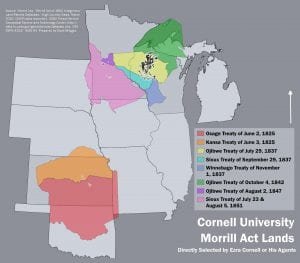
Cornell University Morrill Act Lands, Directly Selected by Ezra Cornell or His Agents (credit: Map prepared by Dusti Bridges, Department of Anthropology, Cornell University) - Recent scholarship has indicated the role of public higher-education funding initiated by the 1862 Morrill Act in the United States’s replacement of the United Kingdom as the world’s primary economic power over the latter three decades of the nineteenth century. Cornell University and fifty-one other land-grant universities converted the resource of former Indigenous land allocated by the federal government into human capital that became a powerful driver of persistent, self-sustaining financial growth.[13] We now also know more about the relationship between past land loss and the intergenerational trauma experienced by many contemporary Native American populations, and more particularly how its effects are compounded over time.[14] As Randall Akee reminds us, “[d]eprivation accumulates over generations.”[15] In light of these facts, it is imperative that Cornell University move beyond its current response to recent revelations concerning the role of Indigenous dispossession in the unmatched revenues the institution obtained as a result of the Morrill Act of 1862. Simply promulgating an incomplete land acknowledgment and a non-committal expression of “commitment” is insufficient,[16] particularly in light of the responses already underway at peer land-grant institutions – none of which, it must be emphasized, benefited to as great a degree as did Cornell University from the Morrill Act.
- A review of the “Activity Timeline” on the introductory page of the Cornell University and Indigenous Dispossession Committee website indicates that since the publication of the LGU report in March 2020, the general thrust of the response at Cornell has come from faculty, staff, and students, with administrators manifesting a comparative “lack of substantive action toward redress” if not outright refusals of requests for information and support from the Committee. It is time for this dynamic to change. As the examples from Cornell’s peer institutions demonstrate, meaningful responses from land-grant universities to the question of the Morrill Act’s grounding on Indigenous dispossession require substantial investment (both monetary and intellectual) from leadership. Cornell University cannot continue to permit its institutional response to the LGU report to be limited to what Tristen Ahtone described in June 2022 as the efforts of “small groups of people [at various land-grant institutions] who are trying to do what they think is the right thing.”[17]
- If there is a silver lining to being late, one advantage that the Cornell University administration now possesses is an emerging body of “best practices” that can be gleaned from the institutional responses of other land-grant institutions to date. As the exceptional beneficiary of federal largesse taken from Indigenous nations and distributed by the Morrill Act of 1862, Cornell University has become, 160 years later, a wealthy, powerful institution. With that power comes responsibility. It is time for Cornell to do better.
 Jon Parmenter is an Associate Professor of History at Cornell University. During the 2022-23 academic year he will be a faculty fellow at the Cornell Society for the Humanities, focusing on the theme of Repair. In Fall 2022, he will teach SHUM/AMST/HIST 4674/6674, “Dispossession, Truth, and Reconciliation.”
Jon Parmenter is an Associate Professor of History at Cornell University. During the 2022-23 academic year he will be a faculty fellow at the Cornell Society for the Humanities, focusing on the theme of Repair. In Fall 2022, he will teach SHUM/AMST/HIST 4674/6674, “Dispossession, Truth, and Reconciliation.”
[1] Edited by K. Tsianina Lomawaima, Kelly McDonough, Jean M. O’Brien, and Robert Warrior, Volume 8, no.1, pp.89-182.
[2] See ibid, pp.90 (quote), 95, 108, 114, 123, 138n2, 145-50, 181.
[3] David Roediger, “Morrill Issues and Academic Liberalism,” ibid, 96; Bryan McKinley Jones Brayboy and Amanda R. Tachine, “Myths, Erasure, and Violence: The Immoral Triad of the Morrill Act,” ibid, 139-42.
[4] Mark Palmer, “Drawing a Line from their Institution: One Origin Story of Indigenous GIS Design,” ibid, 109; Marcel Brousseau, “Unrefutable Responsibility: Mapping the Seeds of Settler Futurity and Seeding the Maps of Indigenous Futurity,” ibid, 112-13.
[5] Randall Akee, “Stolen Lands and Stolen Opportunities,” ibid, 124.
[6] Donna Feir and Maggie E.C. Jones, “Repaying a Debt? The Performance of Morrill Act University Beneficiaries as Measured by Native Enrollment and Graduation Rates,” ibid, 131.
[7] Theresa Stewart-Ambo, “The Future is in the Past: How Land-Grab Universities Can Shape the Future of Higher Education,” ibid, 166-67; Meredith McCoy, Roopike Risam, and Jennifer Guiliano, “The Future of Land-Grab Universities,” ibid, 169-70.
[8] See also Alyssa Mt. Pleasant and Stephen Kantrowicz, “Campuses, Colonialism, and Land Grabs before Morrill,” ibid, 151-56.
[9] 2021 APLU Annual Report, 11-14. Available online https://www.aplu.org/library/2021-aplu-annual-report/File. Accessed August 8, 2022.
[10] It can also be accessed via the “About Cornell” link on the University’s homepage: https://www.cornell.edu/about/ (accessed August 9, 2022).
[11] Samuel D. Halliday, A History of the Federal Land Grant of July 2, 1862 For the Establishment of Colleges of Agriculture and the Mechanic Arts, with a Full Account of the Land Scrip Allotted to the State of New York and Afterward Given to Cornell University [(1905); 2nd ed., Ithaca: Cornell University, 1923], 46-47.
[12] Since publication of my initial summary of the tribal nations whose lands were directly managed by Cornell University to grow the endowment, I have learned that the University also located parcels within the lands ceded by the Ho-Chunk (Winnebago) Nation in the treaty of November 1, 1837. See https://treaties.okstate.edu/treaties/treaty-with-the-winnebago-1837.-(0498) (accessed August 8, 2022).
[13] Isaac Ehrlich, Adam Cook, and Yong Yin, “What Accounts for the US Ascendancy to Economic Superpower by the Early Twentieth Century? The Morrill Act – Human Capital Hypothesis,” Journal of Human Capital 12.2 (2018): 233-81.
[14] William E. Hartmann et al, “American Indian Historical Trauma: Anticolonial Prescriptions for Healing, Resilience, and Survivance,” American Psychologist 74.1 (2019): 6-19.
[15] “Stolen Lands and Stolen Opportunities,” 124.
[16] Stewart-Ambo and K. Wayne Yang, “Beyond Land Acknowledgment in Settler Institutions,” Social Text 39.1 (March 2021): 21-46.
[17] Quoted in Royster, “This Land is Their Land.”
